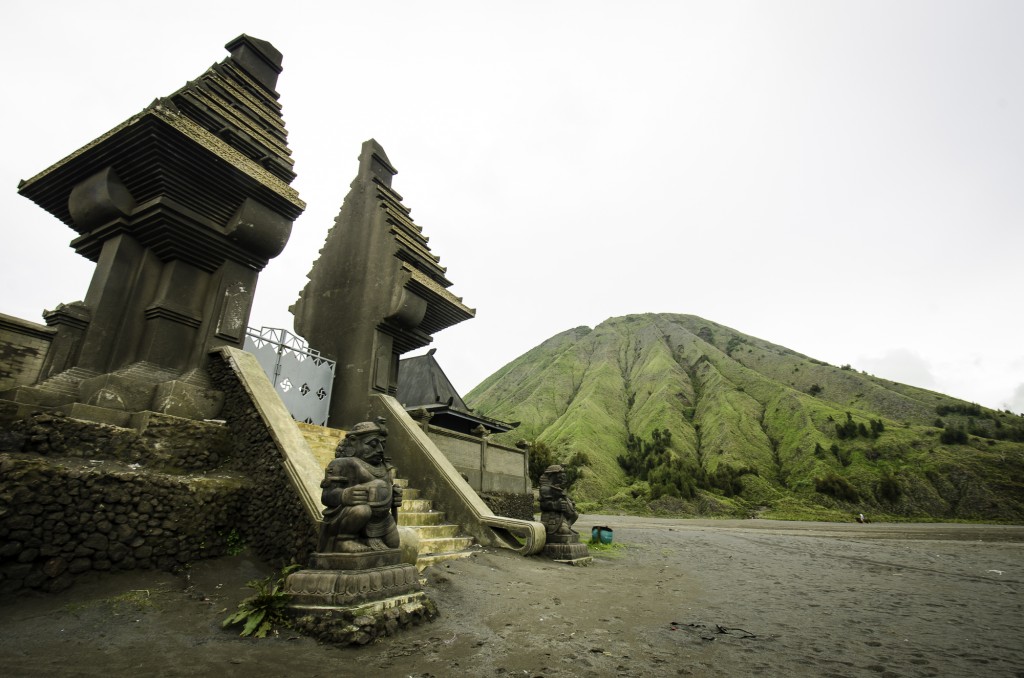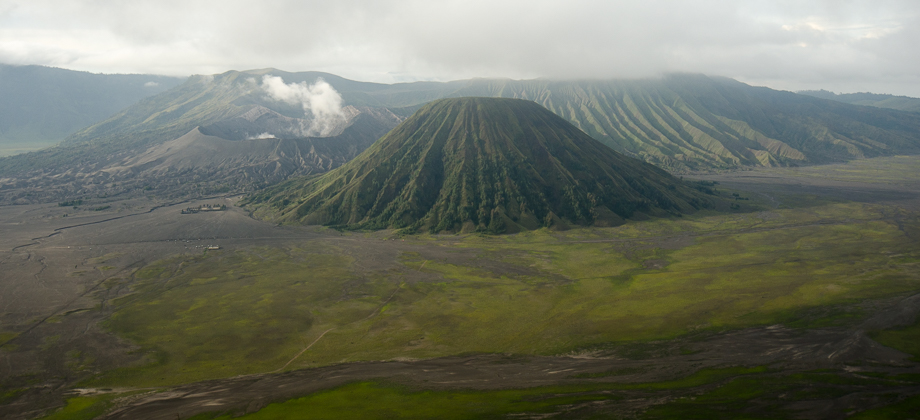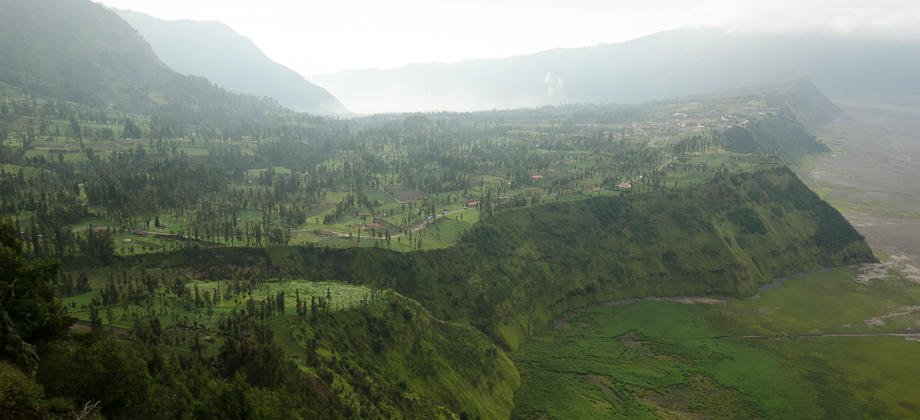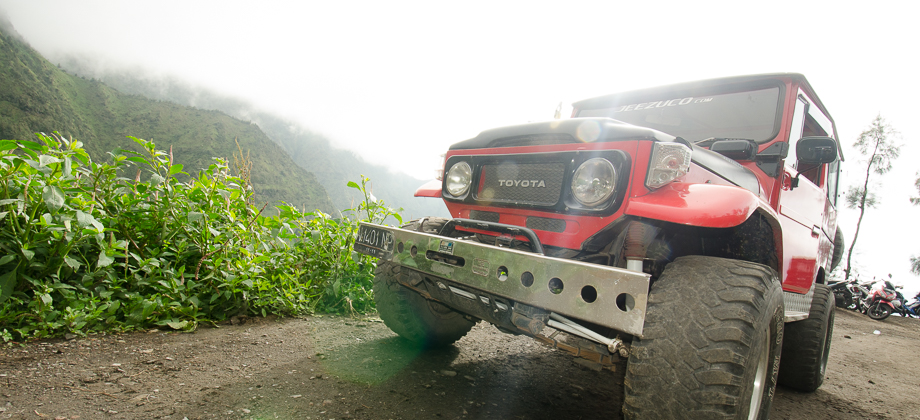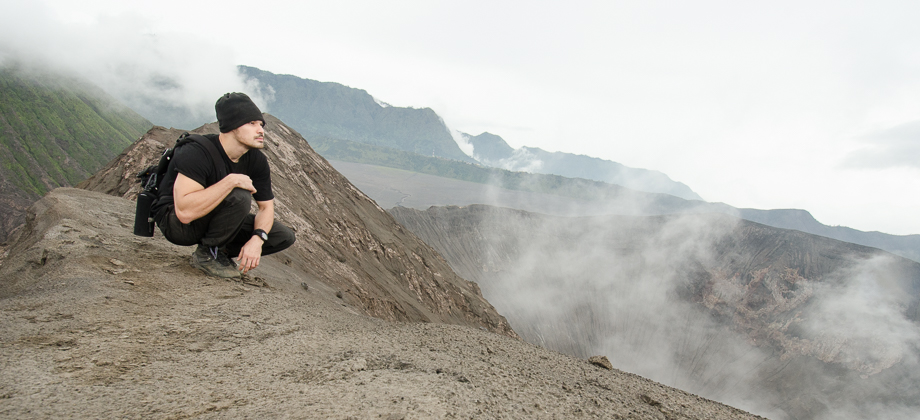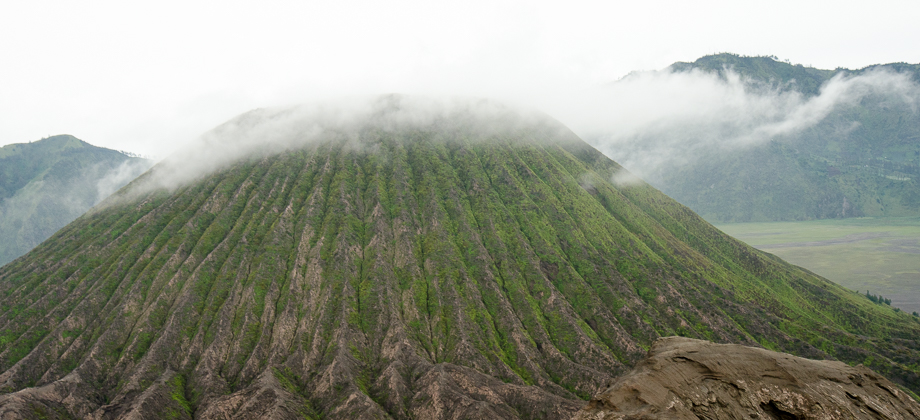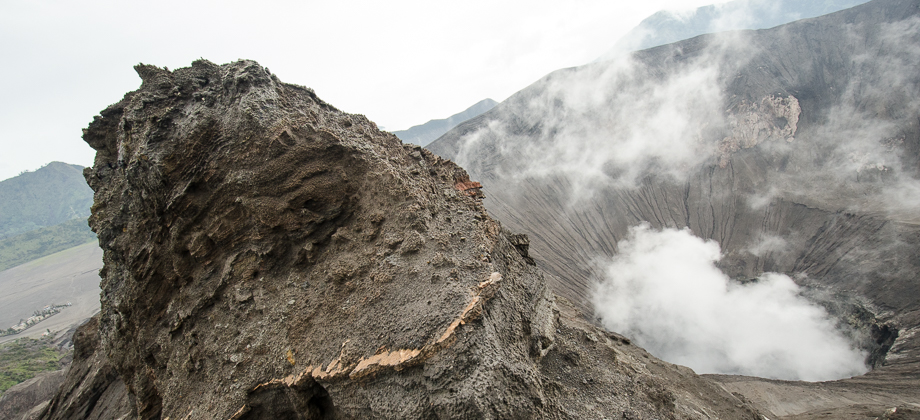Mount Bromo
The Tenggerese
Only on the way down did I realize that the trail that I had previously taken in the dark was particularly scenic with small huts dotting the farmland surrounded by large swaths of land growing local produce. The small huts almost seemed to be a throwback to agricultural times with an anachronism that seem to have survived the unyielding march of modern technology.
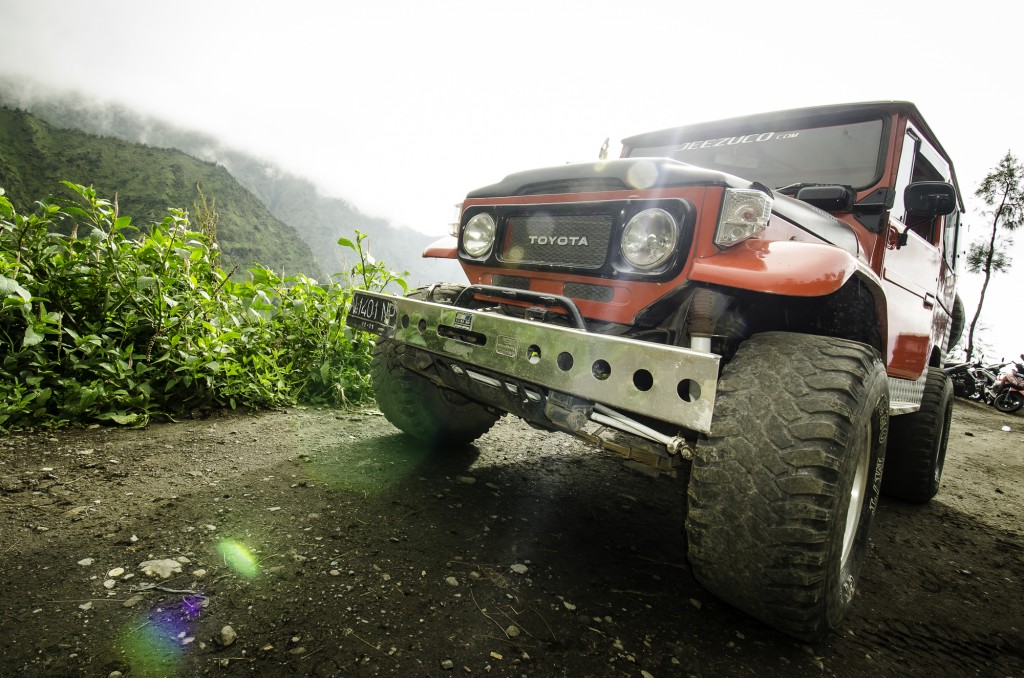
The local Tenggerese themselves, a Hindu community believed to be descendants of Majapahit royalty, all seemed to wear what upon first glance seemed to be shawls around their necks but were in actual fact just sarungs that they used as a blankets when the temperature started to drop. I also saw these sarungs being used by mothers to support their babies on their backs as well as by older women who used them to wrap items when they were carried from one place to another. They all seemed very friendly and would wave to me as I passed and would often greet me as I passed them on the path. Once again I didn't notice any other tourists making the trek back to Cemero Lawang and had either left earlier or had taken a 4WD jeep or a speeda back.

I made my way back to the small warung that I had frequented previously for my well-overdue daily dose of caffeine. I met two local men there who struck up a conversations with me and were somewhat surprised when they found out that I was traveling alone, remarking "berani!" (brave!) as if they found it to be aberrant in some way. They also had assumed that I had a background in the military for some reason that I could not fathom. Was it perhaps the fact that I had a shaved head or maybe because I dressed almost entirely in black?
My racial ambiguity also seemed to confuse everyone that I met as they would always presuppose that I was a Caucasian but doubt would quickly overcome them when I would begin to speak to them in Bahasa Indonesia. On several occasions I was tempted to blurt out something along the lines of "I am the product of the act of miscegenation", an urge likely to be influenced by the book that I was currently reading, 'The Greatest Show on Earth', a book on Evolution by Dr. Richard Dawkins.
The Tengger Caldera

After a short post-lunch nap, I made my way down the Tengger caldera via one of the trails that was obviously frequently used by horses. Lying in between the town of Cemero Lawang and Mount Bromo lies 'Segara Wedi' (Sea of Sand in Javanese) or 'Laut Pasir' in Bahasa Indonesia which is a huge expanse of fine black volcanic sand that is barren and almost completely devoid of vegetation. Crossing this large expanse of sand left an eerie feeling that was all-encompassing, almost as if it permeated the air.
The caldera was originally a stratovolcano that had been built up by a succession of pyroclastic deposits and lava flows apparently to a height of about 4500m. The stratovolcano apparently collapsed after a massive eruption around 45,000 years ago, forming the current caldera. Mount Batok is the youngest of the six intra-caldera vents although Mount Bromo is the only one that is currently active.
As I made my way across the caldera, I came upon the austere Poten Hindu temple (Pura Luhur Poten), made more impressive with Mount Batok looming behind it, apparently only open at specific times of the year. The Tenggerese here worship Ida Sang Hyang Widi Wasa (Big Almighty Lord), along with the Trimurti gods (Siwa, Brahma and Visnu). I made my way past the temple and veered east towards Mount Bromo, passing by local Tenggerese who had either set up stalls selling food and drinks and Javanese edelweiss (Anaphalis javanica). They shouted "Tradisi! Tradisi!" and hoped that you would purchase the flowers in order to throw them into the volcano. There were also horses ready for tourists who found the trek difficult. The only portion that the unfit may deem strenuous would be the yellow stairwell that leads up to the viewing platform, which consists of about 250 steps.
